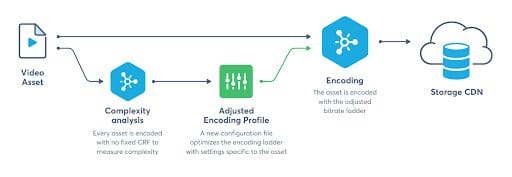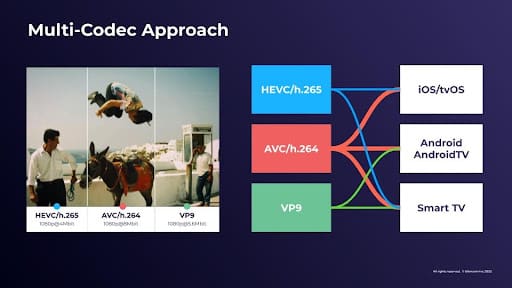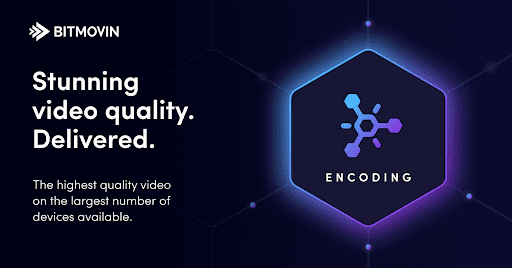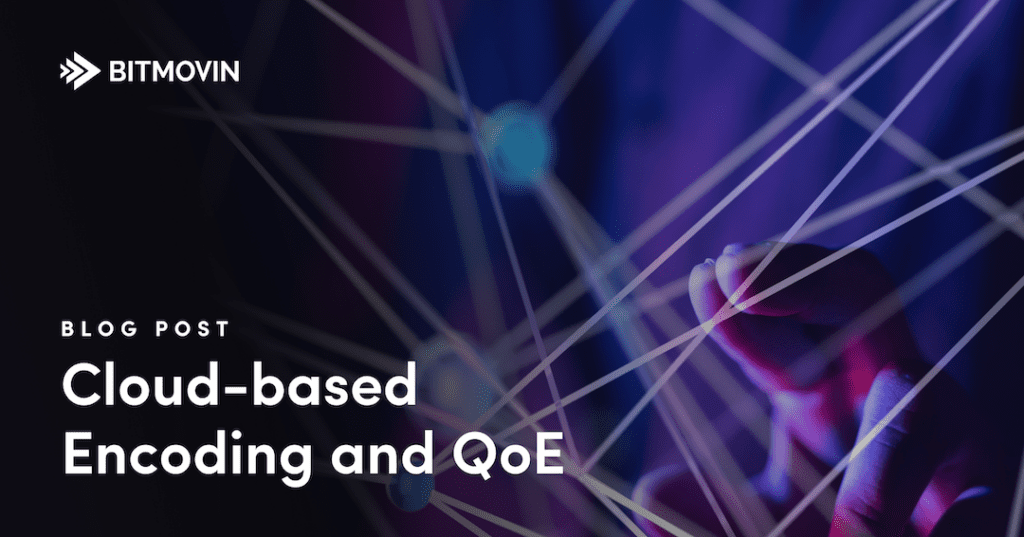The demand for high-quality video continues to grow at a steady pace
Streamed video content has been on a constant trajectory of growth over the course of the past 5-10 years. However, the demand for even more content, services, and supported devices ballooned throughout 2020 as a result of the COVID-19 pandemic, with an average market penetration rate of 93% for AVOD services, and 78% for SVOD services with nearly 949 million global users.
As the average consumer is expected to use an average of 5.5 different services at a given time, the competition to capture and keep their attention is incredibly high. So it’s the burden of modern streaming services (including less traditional ones like eLearning, Fitness, and religious institutions) to deliver a high-quality user experience. In today’s streaming environment, a high-quality experience (QoE) is influenced by a few key factors such as resolution, start-up time, buffer rates, error rates, and device reach. However, historically speaking achieving a high QoE is neither an easy, nor an inexpensive feat. But that’s not the case for long, not with technologies like Cloud-based Encoding that efficiently deliver high-quality content across nearly all device types and at any given bitrate.
What exactly is Per-Title Encoding?
Per-Title encoding is the process of encoding a video file that customizes a bitrate ladder based on the complexity of the selected content, with the specific goal of selecting the ideal bitrate that captures just enough information to present the optimal viewer experience.

This is further optimized by a service’s selection of Video Codecs, all of which have their own variations of efficiency ratings – however, by applying a multi-codec approach (ex: A mix of HEVC and VP9) within the Per-Title workflow, one can reach up 99% of available devices.

For some context, organizations like Netflix, YouTube, Globo, and BBC are all using Per-Title encoding to increase the speed of their time-to-market, all while maximizing the quality of each piece of content.
So where do cloud-based workflows fit in?
Generational Shift in Encoding Technologies
Up until roughly two years ago, nearly all content delivery workflows utilized hardware encoding solutions, this type of technology even dates back to the original transmission of black and white broadcast television. However, much like nearly every other SaaS solution, encoding has rapidly started shifting towards cloud-based solutions across the three major server providers, AWS, Azure, and Google Cloud Platform.
At the beginning of 2021, Bitmovin hosted a panel session featuring Streaming Media expert Dan Rayburn, alongside experts from Blizzard Entertainment and Sinclair Digital titled Encoding Workflows Best Practices, where they addressed the growing market of cloud-based encoding workflows:
“I’ve definitely seen a huge jump to cloud and transporting as a service and encoding as a service. The cost of operating a workflow is now based on a service per month instead of supporting it on-prem with your own engineers who need to do most of the building and support.” – Doug Bay, Sinclair Digital
Cloud-based workflows help enable organizations to scale their new apps and platforms with extensive potential customization based on their individual needs. This new methodology is consistently improving three primary factors of running an OTT service: Resource Availability, Time-to-Market, and Reducing Operational Costs.
Benefits of Cloud-based Encoding Workflows
- Resource Availability – Moving encoding workflows to the cloud opens up countless engineering and support resources to focus on other more critical tasks like improving general user experience, implementing AI, or building more stable workflows.
- Cost Reduction – The next major benefit of a Cloud-based workflow is a reduction in pure cost, building and sustaining your own hardware encoder and the server is an immense undertaking. Given that the cloud is shared by multiple organizations, you are no longer on the hook for owning your own expensive server. These costs are further reduced by an equally expanding market of cloud-service providers to sustain the high demand.
“The availability of the silent architecture allows more organizations to make the shift away from on-prem: firstly from a financial perspective, and secondly from a scalability standpoint – you can’t get this type of scale with the financial return in continuing with ground-based encoding factories.” – Corey Smith, Blizzard
- Time-to-Market – Establishing a fully functional transcoding workflow on your own will take you months, especially since you have to devote those highly valuable engineering resources. Cloud-based infrastructures have preset templates that you just need to plug your content into, and you can carry on with your distribution, allowing organizations to publish VoD content almost immediately after the live broadcast concludes.
Today, most video encoding service providers offer a cloud-based solution in addition to the standard hardware-based solution. As of 2020, Bitmovin shifted to a cloud-only solution and offers operators to use their own cloud service, aptly called “Cloud Connect”.
Introducing Cloud Connect

The new Cloud Connect cloud-based encoding solution makes it possible to install Bitmovin’s API directly on your infrastructure, so you can ensure that private data never leaves your cloud data center. This yields three overarching benefits:
- Data Privacy and Security – If the privacy and security of your video files are of paramount importance, Cloud Connect adds a layer of protection. While Bitmovin’s standard Managed Cloud supports Hollywood-grade security practices such as multi-DRM support for Microsoft PlayReady, Google Widevine, & Apple FairPlay Streaming, license key protection, watermarking, concurrency management, and more, data still needs be processed through Bitmovin’s API. With Cloud Connect, you can keep your video files inside your internal network throughout the entire encoding process.
- Cost – While Bitmovin’s Managed Cloud encoding API will save you money on bandwidth in the long run, you might be able to negotiate better hosting rates by installing Cloud Connect on your infrastructure directly. Due to competition in the cloud hosting ecosystem, large customers are often able to negotiate rock-bottom rates in exchange for long-term commitments.
- Maintenance – Finally, it’s worth noting that when you use Bitmovin Cloud Connect, you’ll be bringing your own cloud account. Managed AWS, Azure, or GCP instances should require very little maintenance because Bitmovin’s software handles the auto-scaling and container provisioning for you. With Bitmovin Managed cloud, Bitmovin’s team will be responsible for configuring these instances, so you won’t have any direct input, but with Cloud Connect, you’ll have full control over your servers.
With an ever-increasing global demand for high-quality VoD apps and platforms, it’s imperative that streaming services within every industry work towards creating a highly efficient (while relatively inexpensive) backend video infrastructure.
If you’d like to take a deeper dive into cloud connect encoding workflows, check out some of our other great content below:
Blog Series – Cloud-based Per-Title Encoding Workflows (with AWS)
Establishing the Architecture
Implementing the new Workflow
Adding a Player and Video Analytics
This article was featured in MEDIANTEK’s Summer 2021 Magazine. View the full magazine here





